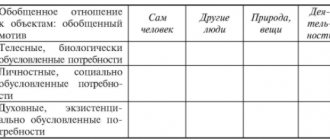Mask of laughter
Temperament is also associated with the physical qualities of a person.
Temperament is also associated with the physical qualities of a person. Sanguine people, as a rule, have a picnic build, they tend to be overweight, and in their facial muscles the muscles that raise the corners of the mouth are genetically better developed. When the situation is clearly cheerful, the sanguine person laughs. The more often he laughs, the more these muscles develop. A sanguine person is already an optimist, but in the process of life he becomes even more optimistic: when the situation is emotionally uncertain, most likely, the corners of his lips will be raised upward. At the same time, as studies have shown, mood actually improves. Based on the theory of James Lange, indicating the connection between emotions and muscles, the Americans put forward the thesis: “Keep a smile.”
Melancholic people who are prone to depressive reactions have genetically more developed facial muscles that pull the corners of the mouth down. This is why melancholic people become even more melancholic throughout their lives. Phlegmatic and choleric people have a horizontal mouth line.
Start your education with the “mask of laughter” exercise. It is performed in front of a mirror. Inhale slowly. The corners of the mouth rise upward as much as possible, the eyes squint, the mouth opens slightly, exposing the teeth. Hold your breath. Now exhale quickly and relax your facial muscles. This exercise should be done as often as possible, preferably in combination with other exercises to strengthen the facial muscles.
How does temperament differ from character?
Let us remember that these are two completely different concepts. Character is formed, consolidated or changed under the influence of the following factors:
- education depending on the family situation;
- systematic independent work on oneself (self-education, self-development);
- the degree of acceptance of certain norms provided by the environment;
- analysis of acquired life experience.
In order to change even slightly in character, it is not enough to meet one of the listed conditions: their combination is required.
It is impossible to radically influence temperament as a property of human nature given from birth. However, using the same conditions given above, you can take control of it. The main criterion will be the desire of the person himself, patience and perseverance: the necessary changes will not happen in one hour, a systematic approach is important here.
Definition of temperament and brief instructions for interaction
To determine a person’s temperament from the outside, as well as for self-diagnosis, many methods have been created that show the most accurate result.
- Hans Jurgen Eysenck's questionnaire contains one hundred questions and only two possible answers: yes or no. The test is also notable for the fact that it can be used to recognize a mixed type.
- The method of Nikolai Nikolaevich Obozov is a scale on which you need to select the degree of manifestation of a particular property.
- Diagnostics according to Vladimir Rusalov is in many ways similar to Eysenck’s psychological test, but there are a little more questions - 105. They need to be answered quickly, without going into long thoughts.
- Jan Strelyau's method for diagnosing temperament is intended for adults, as it is replete with terms that teenagers and children have not yet encountered. The test is aimed at assessing three parameters: excitation, inhibition, and the dynamism of mental processes.
- Questionnaire B.N. Smirnova requires the most truthful, sincere answer to each point and allows you to determine the type of reaction, activity, as well as the very sincerity with which the person answered the questions.
- Alexander Belov's formula is based on the concept of mixed types. The test is carried out using four cards on which 20 expressions are presented. Each block corresponds to one or another type of temperament.
It is worth remembering that determining temperament is the first, but not the last step in interacting with a person. The most important thing is to learn to find the right approach to a particular type.
Interaction with a sanguine person
- He cannot live without communication, which is why he always makes a wide circle of acquaintances. Attracts people like a magnet.
- Has his own “cockroaches in his head.” Not being very prone to quarrels, he can sometimes display a similar quality.
- Often makes incorrect conclusions, thinking too quickly and superficially. This trait is inherent in him by nature; you just need to humble yourself and present the information correctly.
- Don't expect a sanguine person to admit a mistake on his own.
- This is the person whose facial expressions speak for themselves: its dynamics reveal true emotions and attitude to what is happening.
- He needs a constant influx of new impressions, and the brighter they are, the happier the sanguine person will feel. If you don't want such a person to leave you, don't let him get bored.
- Loves to give advice and express his opinion.
- He likes to make joint plans, share leisure and responsibilities with someone.
- Extreme and adrenaline are another “air” that a sanguine person breathes.
Interaction with a choleric person
- The speech of a choleric person often precedes his own thoughts.
- Subject to the emotions that he experiences here and now. Don't be surprised if a couple of hours later he gives you the opposite opinion on the same situation.
- In the wake of a surge of anger, he can say unpleasant things, but this does not mean at all that he seriously thinks so. Let the choleric person calm down.
- Do not take all his words or actions to heart, be lenient, avoid conflict situations.
- Try not to return to a discussion of an incident that is not relevant at the moment: choleric people quickly forget what happened.
- You should not put pressure on him, especially with a sense of duty.
- The choleric person needs your support, although he may not show it.
Interaction with a phlegmatic person
- Information from such a person sometimes has to be extracted with pincers.
- A phlegmatic person will never show flexibility in relation to new circumstances: let him get used to them, do not demand that he do it faster.
- Be patient and forgiving: this is still a conservative.
- Instant emotional response and sympathy are not his thing.
- This is a man not of words, but of actions: he may not show or say that he worries about you, but he will definitely do something useful.
- He will expect exactly the same approach from those around him: he doesn’t need words.
- A phlegmatic person is a person of strict logic and prudence. If you want to win his attention and trust, reason in a similar way, avoiding fantasies and abstract statements.
- Figurative expressions and youth slang will be unpleasant for a phlegmatic person. Talk to him clearly, in simple and understandable language.
- Information is best perceived in written form.
Interaction with a melancholic person
- A melancholic person approaches contact with new people carefully and gradually. Do not demand from him speed in this matter.
- Speak calmly, avoiding loud speech and sharp accents on words.
- Do not evaluate from a negative side what a melancholic person values. Avoid categorical judgments and criticism in his direction. Veil all this with the softest phrases possible.
- To get closer to such a person, it is enough to tell some sad story from your life. Melancholic people love heart-to-heart conversations.
- They won't like extreme sports at all. The same goes for horror films and various action films.
- A melancholic person should not be driven into strict deadlines, otherwise he will be overtaken by stupor.
- If an activity requires scrupulousness, attention and careful elaboration of details, a melancholic person will cope with it perfectly.
- Such people have highly developed intuition.
Human Temperament - Definition
Temperament
- this is a stable set of individual psychophysical properties of a person associated not with the content, but with the dynamic aspects of activity.
Simply put, temperament refers to a person’s ability to react to external stimuli and move from one reaction to another. Temperament is determined by the type of higher nervous activity, which consists of three components - the “strength” of the nervous system, its “mobility” and “balance”.
Today, the theory of temperaments is only one of many systems that describe the types of human personality. And once upon a time it was the only such system. The doctrine of them was developed by the ancient doctors Hippocrates and Galen, who were confident that a person’s character type depends on the predominance of one or another “vital juice” in his body - blood, lymph, yellow and black bile. And the word “temperament” itself, translated from Latin, means “mixture” - it meant a mixture of these “vital juices”.










